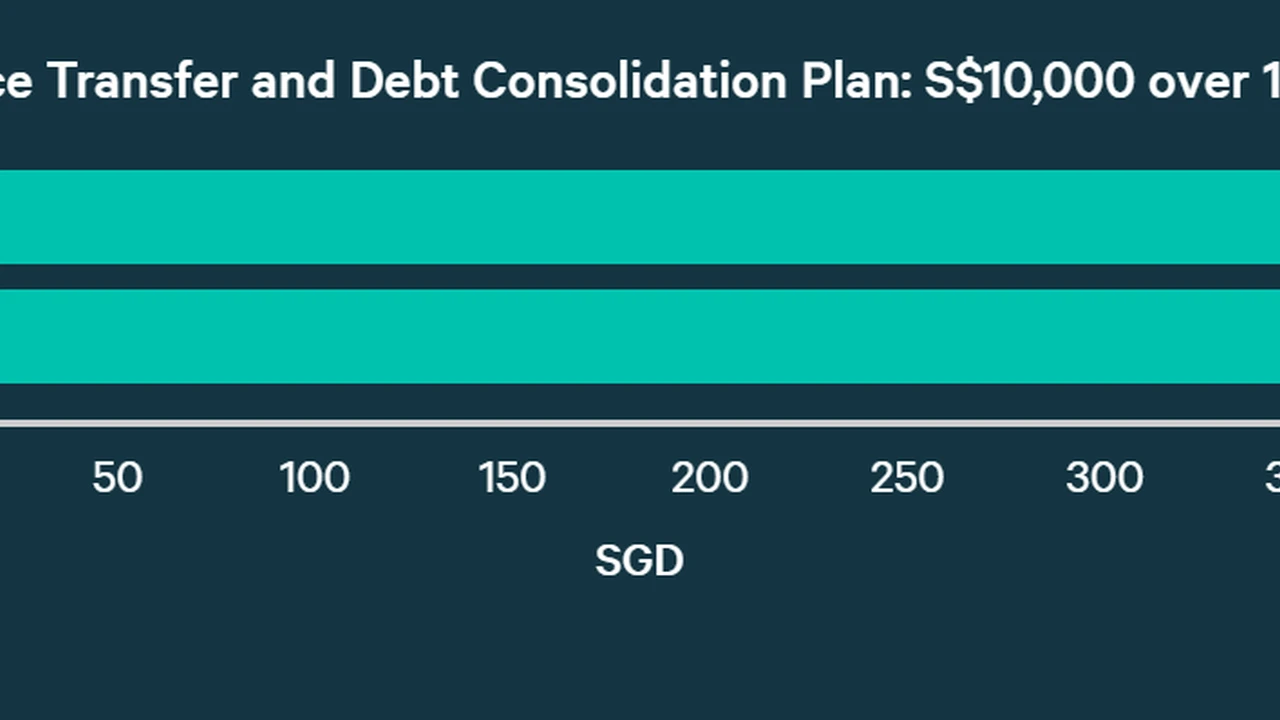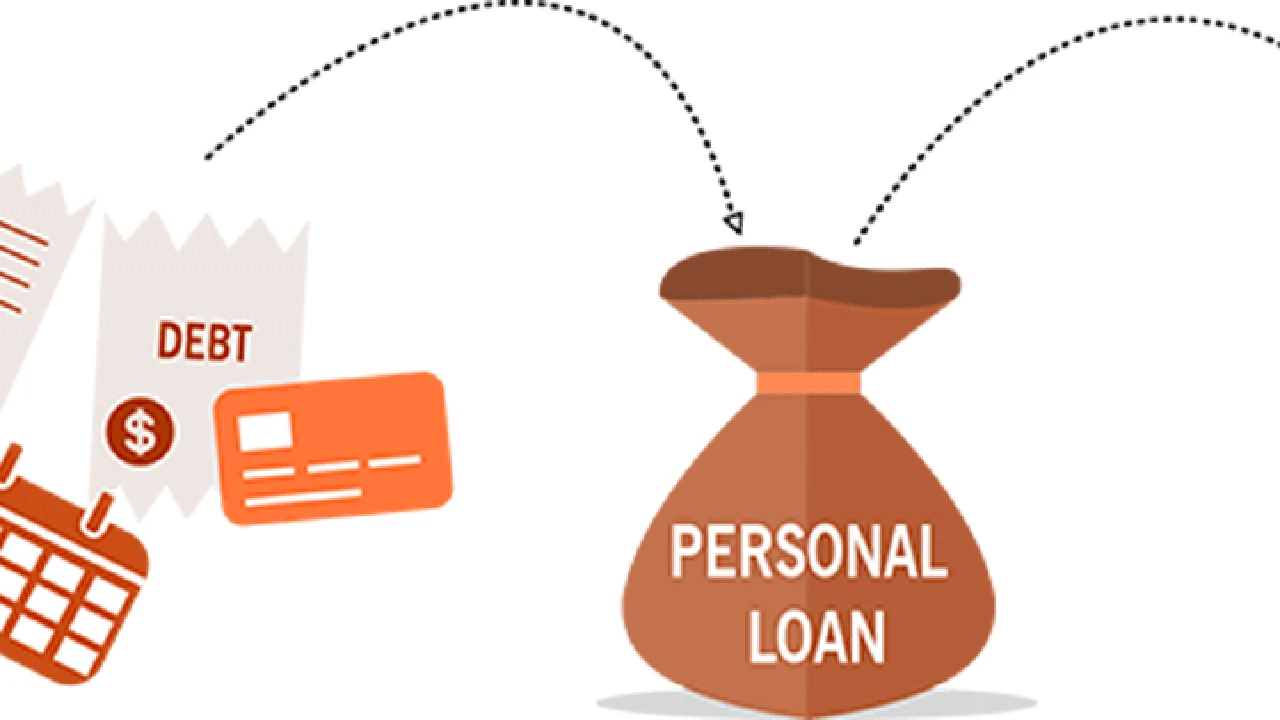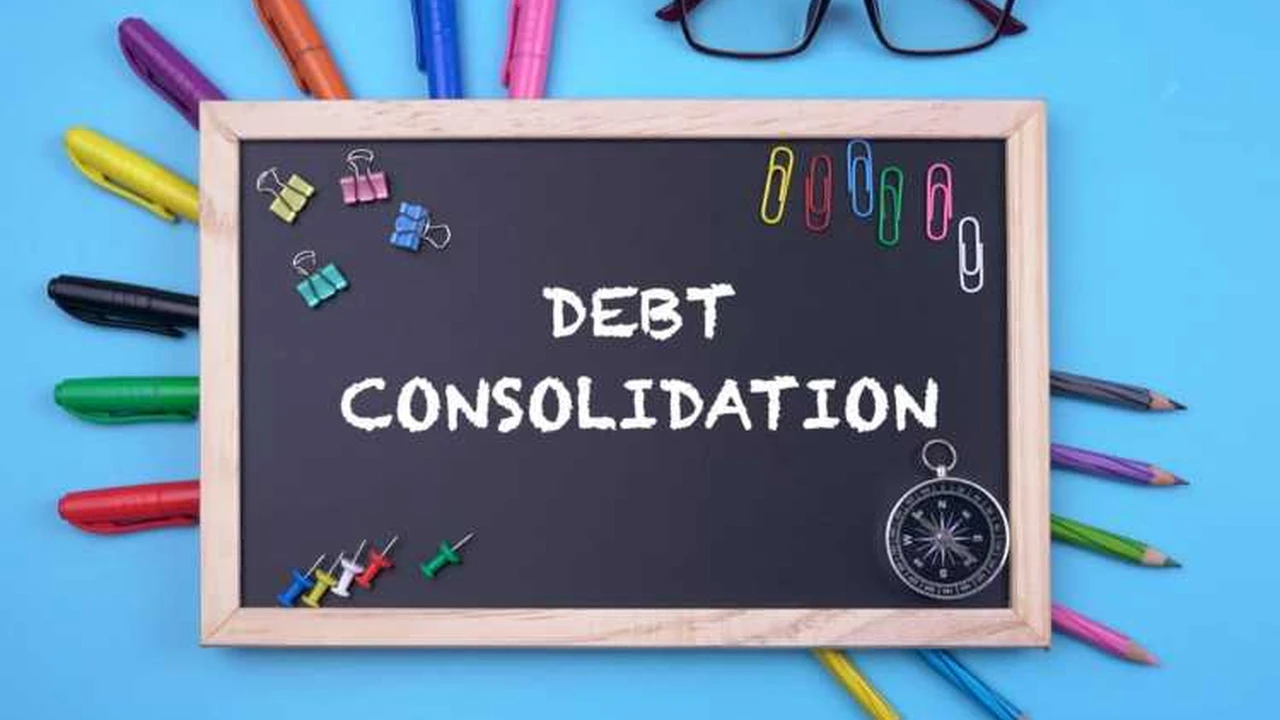Debt Consolidation Loans vs Balance Transfer Cards Which is Right for You
Compare debt consolidation loans and balance transfer credit cards to find the best strategy for managing and reducing your debt.

Debt Consolidation Loans vs Balance Transfer Cards Which is Right for You
Understanding Debt Consolidation Loans Your Path to Simplified Payments
So, you're drowning in a sea of multiple debts, each with its own interest rate, due date, and minimum payment. It's a common scenario, and it can feel overwhelming. That's where debt consolidation comes in. Specifically, a debt consolidation loan is a personal loan you take out to pay off all your existing, higher-interest debts. Think of it as rolling several small snowballs into one giant, manageable snowball. Instead of juggling payments to multiple credit card companies, medical providers, or personal loan lenders, you make one single payment to one lender at a (hopefully) lower interest rate.
The primary goal here is simplification and savings. By securing a lower interest rate, you can reduce the total amount of interest you pay over the life of the loan, potentially saving you hundreds or even thousands of dollars. Plus, having a fixed monthly payment makes budgeting much easier. You know exactly how much you owe each month, and for how long. This predictability can be a huge relief for anyone feeling stressed by their financial obligations.
Debt consolidation loans are typically unsecured, meaning you don't have to put up collateral like your home or car. This is a big plus for many people, as it reduces the risk of losing valuable assets if you can't make payments. However, because they're unsecured, lenders rely heavily on your creditworthiness. A good credit score will generally get you a better interest rate. If your credit isn't stellar, you might still qualify, but the interest rate could be higher, diminishing some of the savings benefits.
The application process usually involves a credit check, income verification, and a review of your existing debts. Once approved, the loan funds are often disbursed directly to you, and you then use that money to pay off your other creditors. Some lenders might even offer to pay your creditors directly, streamlining the process further. Repayment terms typically range from 2 to 7 years, giving you a clear timeline for becoming debt-free.
Exploring Balance Transfer Credit Cards A Strategic Debt Management Tool
Now, let's shift gears and talk about balance transfer credit cards. These are another popular tool for debt consolidation, especially for those with high-interest credit card debt. The concept is straightforward: you transfer the balances from one or more high-interest credit cards to a new credit card that offers a promotional 0% APR (Annual Percentage Rate) for a specific period. This introductory period can range anywhere from 6 to 21 months, sometimes even longer.
The magic of a balance transfer card lies in that 0% APR period. During this time, every dollar you pay goes directly towards reducing your principal balance, not just covering interest charges. This can be incredibly powerful for accelerating your debt repayment. Imagine paying off a significant chunk of your debt without any interest eating into your payments – it's a fantastic opportunity to make serious progress.
However, there are a few crucial things to keep in mind. Firstly, most balance transfer cards charge a balance transfer fee, typically 3% to 5% of the amount transferred. While this might seem like an extra cost, it's often a small price to pay compared to the interest you'd save over several months. Secondly, it's absolutely vital to pay off the transferred balance before the promotional 0% APR period expires. If you don't, the remaining balance will revert to the card's standard (and often high) APR, negating much of the benefit.
Balance transfer cards are best suited for individuals with good to excellent credit, as these are the scores that typically qualify for the most attractive 0% APR offers and longer promotional periods. They are also ideal for consolidating credit card debt specifically, as you generally can't transfer other types of debt (like personal loans or medical bills) to a credit card. The credit limit on the new card also needs to be high enough to accommodate all the balances you wish to transfer.
A common pitfall with balance transfer cards is accumulating new debt on the old, now-empty credit cards. To truly succeed with this strategy, it's essential to resist the temptation to use those cards again. Cut them up, freeze them, or simply put them away to avoid falling back into the same debt cycle.
Key Differences Debt Consolidation Loans vs Balance Transfer Cards
While both debt consolidation loans and balance transfer cards aim to help you manage and reduce debt, they operate quite differently and are suitable for different situations. Let's break down the key distinctions:
Debt Type Consolidation Loans for Various Debts Balance Transfer for Credit Cards
This is perhaps the most significant difference. Debt consolidation loans are versatile. You can use them to pay off almost any type of unsecured debt: credit card balances, medical bills, personal loans, even some student loans (though student loan consolidation has its own specific rules). Balance transfer cards, on the other hand, are almost exclusively for consolidating credit card debt. You typically cannot transfer other types of loans to a credit card.
Interest Rates and Promotional Periods Fixed vs Introductory APRs
Debt consolidation loans usually come with a fixed interest rate. This means your monthly payment and the total interest you'll pay are predictable from day one. Balance transfer cards offer a promotional 0% APR for a limited time. This can be a huge advantage if you can pay off the debt within that period, but if not, the interest rate can jump significantly after the introductory offer expires.
Repayment Structure and Timeline Predictable vs Time-Sensitive
With a debt consolidation loan, you have a clear, fixed repayment schedule, often spanning several years (e.g., 3 to 7 years). You know exactly when you'll be debt-free. Balance transfer cards require you to pay off the balance within the promotional period, which is usually much shorter (e.g., 6 to 21 months). This demands a more aggressive repayment strategy and strict discipline to avoid accruing high interest.
Fees and Costs Balance Transfer Fees vs Loan Origination Fees
Balance transfer cards almost always charge a balance transfer fee, typically 3% to 5% of the transferred amount. Debt consolidation loans might have an origination fee (a fee for processing the loan), which can also be a percentage of the loan amount, but not all loans have them. It's crucial to factor these fees into your cost analysis for both options.
Credit Score Requirements and Approval Odds Your Financial Profile Matters
Both options generally require good to excellent credit for the best terms. However, balance transfer cards can sometimes be slightly more accessible for those with good credit, while debt consolidation loans might be more stringent, especially for larger amounts. If your credit score is lower, your options for both will be more limited, and the interest rates higher.
When to Choose a Debt Consolidation Loan Ideal Scenarios and Benefits
A debt consolidation loan shines in several specific situations. Consider this option if:
- You have multiple types of debt: If you're juggling credit card debt, a personal loan, medical bills, and maybe even an old store card, a debt consolidation loan can roll them all into one. This simplifies your financial life immensely.
- You prefer predictable payments: A fixed interest rate and a set monthly payment for a defined period (e.g., 3 or 5 years) offer peace of mind and make budgeting straightforward. You know exactly what to expect.
- You need a longer repayment period: If you have a substantial amount of debt that you can't realistically pay off within a 0% APR balance transfer period, a debt consolidation loan offers longer terms, making monthly payments more affordable.
- Your credit score is good to excellent: A strong credit score will qualify you for the lowest interest rates, maximizing your savings and making the loan a truly effective tool.
- You want to avoid the temptation of new credit: Once your debts are paid off with the loan, those old credit card accounts are ideally closed or put away, removing the temptation to rack up new charges.
Recommended Debt Consolidation Loan Providers and Products
When looking for a debt consolidation loan, it's wise to compare offers from several lenders. Here are a few reputable options, keeping in mind that rates and terms can vary based on your creditworthiness and market conditions:
LightStream Personal Loans
- Overview: Known for offering some of the lowest interest rates for borrowers with excellent credit. They offer a wide range of loan purposes, including debt consolidation.
- Key Features: No origination fees, no prepayment penalties. Fixed rates. Loan amounts from $5,000 to $100,000.
- Ideal User: Borrowers with excellent credit (typically 700+ FICO score) who want the lowest possible rate and flexible terms.
- Application Scenario: You have a high credit score and want to consolidate $15,000 in credit card debt from various cards. LightStream could offer you a competitive rate, potentially as low as 5.99% APR for a 3-year term (rates are illustrative and subject to change).
SoFi Personal Loans
- Overview: SoFi is popular for its competitive rates, flexible terms, and unemployment protection program. They cater to financially responsible individuals, often with good to excellent credit.
- Key Features: No origination fees, no prepayment penalties. Fixed and variable rate options. Loan amounts from $5,000 to $100,000.
- Ideal User: Borrowers with good to excellent credit (typically 680+ FICO score) looking for competitive rates and potentially longer repayment terms.
- Application Scenario: You have $20,000 in various debts (credit cards, old personal loan) and a good credit score. SoFi might offer a 5-year loan at around 7.99% APR, making your monthly payments manageable.
Marcus by Goldman Sachs Personal Loans
- Overview: Marcus offers personal loans with no fees (no origination fees, no late fees, no prepayment penalties). They focus on a straightforward application process and competitive rates.
- Key Features: No fees whatsoever. Fixed rates. Loan amounts from $3,500 to $40,000.
- Ideal User: Borrowers with good credit (typically 660+ FICO score) who prioritize a fee-free experience and predictable payments.
- Application Scenario: You have $10,000 in credit card debt and want a simple, fee-free loan. Marcus could offer a 4-year loan at 8.50% APR, with no hidden costs.
Discover Personal Loans
- Overview: Discover offers personal loans specifically for debt consolidation, with fixed rates and no origination fees. They are known for their customer service.
- Key Features: No origination fees. Fixed rates. Loan amounts from $2,500 to $40,000. Direct payment to creditors option.
- Ideal User: Borrowers with good credit (typically 660+ FICO score) who appreciate direct payment options to simplify the process.
- Application Scenario: You have $8,000 across two credit cards and want the lender to pay them directly. Discover could provide a 3-year loan at 9.25% APR and handle the creditor payments for you.
Important Note on Pricing: The interest rates mentioned are illustrative examples and can change daily based on market conditions, your credit score, debt-to-income ratio, and other factors. Always get personalized quotes from multiple lenders to find your best rate.
When to Opt for a Balance Transfer Credit Card Strategic Debt Attack
A balance transfer credit card can be a powerful weapon against debt, but it's best deployed in specific situations:
- You have only credit card debt: If your primary debt burden comes from high-interest credit cards, a balance transfer card is perfectly suited to tackle this.
- You can pay off the debt within the promotional period: This is critical. If you're confident you can eliminate the transferred balance before the 0% APR expires (e.g., within 12-18 months), this option offers maximum savings.
- Your credit score is good to excellent: The best 0% APR offers with the longest promotional periods are reserved for those with strong credit profiles.
- You are disciplined and won't incur new debt: This strategy requires strong self-control. You must resist the urge to use the old, now-empty credit cards or even the new balance transfer card for new purchases.
- You have a manageable amount of debt: If your total credit card debt is, for example, $5,000 to $15,000, it's often more feasible to pay this off within a 0% APR window than a much larger sum.
Top Balance Transfer Credit Card Recommendations
Here are some of the leading balance transfer credit cards, known for their competitive 0% APR periods and features. Remember to check the most current offers as they can change frequently:
Citi Simplicity Card
- Overview: Often boasts one of the longest 0% intro APR periods for both balance transfers and purchases.
- Key Features: Up to 21 months 0% intro APR on balance transfers (then variable APR). No late fees, no penalty rate. Balance transfer fee typically 3% or 5%.
- Ideal User: Someone with good to excellent credit who needs a very long runway to pay off credit card debt and wants to avoid late fees.
- Application Scenario: You have $7,000 in credit card debt and need nearly two years to pay it off. The Citi Simplicity card could offer a 21-month 0% APR period, allowing you to make significant progress without interest.
Wells Fargo Reflect Card
- Overview: Offers a competitive introductory 0% APR period that can be extended.
- Key Features: 0% intro APR for 18 months on purchases and qualifying balance transfers. Can be extended for up to 3 months with on-time minimum payments (totaling 21 months). Balance transfer fee typically 3% or 5%.
- Ideal User: Someone with good to excellent credit who wants a solid 0% APR period and the potential for a slight extension if they manage their payments well.
- Application Scenario: You have $5,000 in credit card debt and are confident you can pay it off within 18-21 months. The Wells Fargo Reflect card provides a strong interest-free window.
BankAmericard Credit Card
- Overview: A straightforward balance transfer card from Bank of America with a competitive 0% intro APR.
- Key Features: 0% intro APR for 18 billing cycles on purchases and balance transfers (then variable APR). Balance transfer fee typically 3% or 5%.
- Ideal User: Someone with good to excellent credit looking for a reliable balance transfer option from a major bank.
- Application Scenario: You have $6,000 in credit card debt and want a solid 18-month interest-free period. The BankAmericard offers a clear path to debt reduction.
Chase Slate Edge
- Overview: Offers an introductory 0% APR and unique features like automatic credit limit reviews and interest rate reductions for on-time payments.
- Key Features: 0% intro APR for 18 months on purchases and balance transfers (then variable APR). Balance transfer fee typically 3% or 5%. Potential for annual APR reduction by 2% after each year of on-time payments.
- Ideal User: Someone with good to excellent credit who wants a competitive 0% APR and appreciates the potential for long-term interest rate reductions if they carry a balance after the intro period.
- Application Scenario: You have $8,000 in credit card debt and want an 18-month 0% APR, but also value the possibility of a lower standard APR if you don't pay it all off in time.
Important Note on Pricing: The 0% intro APR periods and subsequent variable APRs are subject to change. Always review the card's terms and conditions carefully before applying, especially regarding the balance transfer fee and the APR after the promotional period.
Making the Right Choice for Your Debt Consolidation Strategy
Deciding between a debt consolidation loan and a balance transfer credit card boils down to your specific financial situation, the types of debt you have, your credit score, and your repayment discipline. There's no one-size-fits-all answer, but by carefully considering the factors below, you can make an informed decision.
Assessing Your Debt Profile What Kind of Debt Do You Have
First, list all your debts. Include the type of debt (credit card, personal loan, medical bill), the current balance, the interest rate, and the minimum monthly payment. If the majority of your debt is high-interest credit card debt, a balance transfer card might be a strong contender. If you have a mix of different debt types, a debt consolidation loan will likely be more effective at streamlining everything.
Evaluating Your Credit Score Your Key to Better Rates
Your credit score plays a pivotal role in determining the rates and terms you'll qualify for with either option. Generally, a higher credit score (good to excellent, typically 670+) will open doors to the best 0% APR balance transfer offers and the lowest interest rates on debt consolidation loans. If your credit score is fair or poor, your options will be more limited, and the costs (higher interest rates, higher balance transfer fees) will increase, potentially making these strategies less effective.
Considering Your Repayment Discipline Are You a Disciplined Payer
Be honest with yourself about your ability to stick to a repayment plan. If you're highly disciplined and confident you can pay off the transferred balance within a 12-21 month 0% APR window, a balance transfer card can save you a lot of money. However, if you tend to struggle with making consistent, aggressive payments, or if you're prone to accumulating new debt, a debt consolidation loan with its fixed monthly payments and longer term might be a safer, more predictable choice.
Calculating the Total Cost Fees and Interest Combined
Don't just look at the interest rate or the 0% APR period. Calculate the total cost of each option, including any fees. For a balance transfer card, factor in the balance transfer fee (e.g., 3-5% of the transferred amount). For a debt consolidation loan, consider any origination fees (though many reputable lenders like LightStream and Marcus don't charge them). Sometimes, a slightly higher interest rate with no fees can be cheaper than a lower interest rate with significant upfront fees.
The Temptation Factor Avoiding New Debt
One of the biggest risks with both strategies, especially balance transfer cards, is falling back into debt. If you consolidate your debts and then immediately start racking up new charges on your old credit cards, you'll end up in a worse position than when you started. Whichever option you choose, commit to changing your spending habits and avoiding new debt. Consider closing old credit card accounts once they're paid off, or at least putting them away where they're not easily accessible.
Hybrid Approaches and Other Considerations for Debt Relief
Sometimes, a single solution isn't enough, or you might find that a combination of strategies works best. It's also important to consider other aspects of debt management.
Combining Strategies A Hybrid Debt Attack
For instance, you might use a balance transfer card for your highest-interest credit card debt that you can pay off quickly, and then take out a debt consolidation loan for other, larger debts or those with longer repayment needs. This hybrid approach can maximize your savings and simplify your payments effectively. Always ensure you're not overextending yourself with too many new accounts or complex repayment schedules.
The Role of Credit Counseling Expert Guidance
If you're feeling overwhelmed or unsure which path to take, consider consulting a non-profit credit counseling agency. They can review your entire financial situation, help you create a budget, and provide personalized advice on whether a debt consolidation loan, a balance transfer card, or another debt relief option (like a Debt Management Plan) is best for you. They can offer an unbiased perspective and help you understand the long-term implications of each choice.
Impact on Your Credit Score Short-Term vs Long-Term
Both debt consolidation loans and balance transfers can have an initial impact on your credit score. Applying for new credit results in a hard inquiry, which can temporarily ding your score. Opening a new account also changes your average age of accounts. However, if used responsibly, both strategies can significantly improve your credit score in the long run by reducing your credit utilization ratio (especially with balance transfers) and demonstrating consistent, on-time payments. The key is responsible usage and timely payments.
Staying Vigilant Post-Consolidation Your Financial Future
Once you've consolidated your debt, the work isn't over. It's crucial to maintain good financial habits. This includes sticking to your budget, making all payments on time, and avoiding new debt. Regularly review your financial progress and adjust your budget as needed. The goal isn't just to consolidate debt, but to achieve lasting financial freedom and stability.
Ultimately, the best choice for you depends on your unique circumstances. Take the time to research, compare offers, and understand the terms and conditions of each product. By doing so, you'll be well-equipped to choose the debt consolidation strategy that puts you on the fastest and most affordable path to becoming debt-free.
:max_bytes(150000):strip_icc()/277019-baked-pork-chops-with-cream-of-mushroom-soup-DDMFS-beauty-4x3-BG-7505-5762b731cf30447d9cbbbbbf387beafa.jpg)






